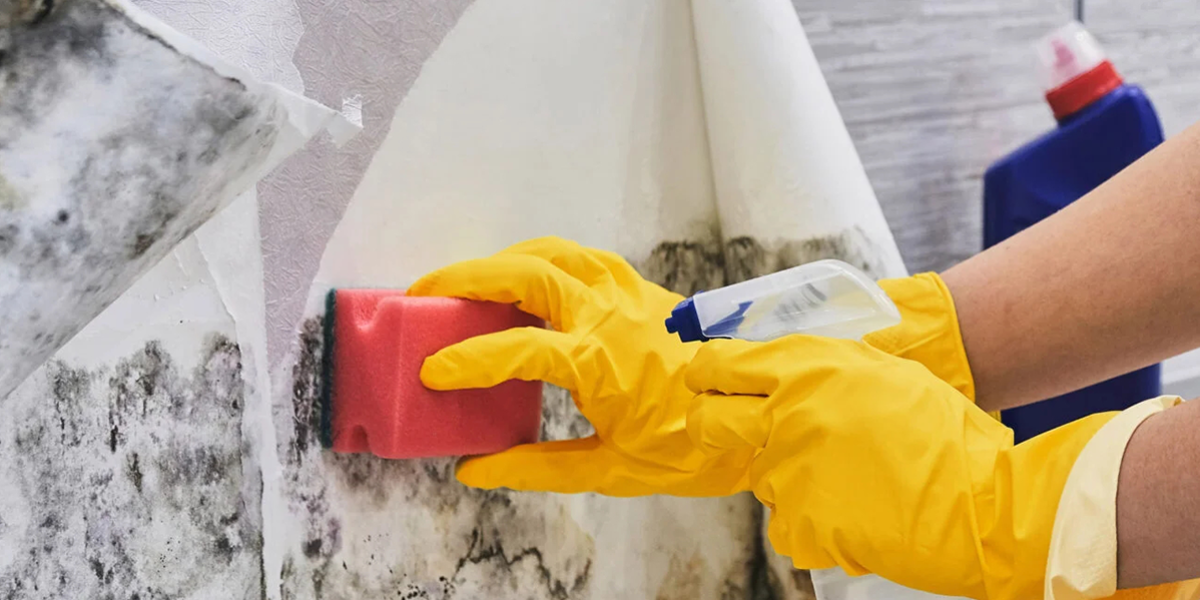News
What's Better for Mold, Air Purifiers, or Dehumidifiers?
Mold forms in moist areas. Both air purifiers and dehumidifiers can be used for mold, but they differ in how they tackle the problem. A dehumidifier will prevent mold growth by keeping humidity levels low. An air purifier can catch mold spores and other allergens, relieving breathing and allergies. The best solution depends on your situation. If you have a mold problem, you need a dehumidifier to prevent further spread. An air purifier should be able to address the remaining spores. For those who don't need to be concerned about mold but have allergies, the air purifier will serve them better. In some instances, utilizing them all together is the best strategy for fighting mold and can increase indoor air quality. The Role of Air Quality in Mold Prevention 1. Moisture Control Mold prefers to live in wet and humid areas. Spores of mold, which are reproductive systems, can travel from one place to another via the air and attach to various articles on the ground. These spores will germinate and start growing in a moist environment. The key to successful mold prevention is proper indoor moisture control. A 30-50% relative humidity level is optimal for preventing mold development. The mold risk is remarkably reduced. Air conditioners and dehumidifiers are ideal for removing elevated humidity from the atmosphere. 2. Ventilation and Airflow Efficient airing and ventilation are the basis of indoor air quality maintenance and mold development prevention. Ventilation will help remove moisture, pollutants, and stale air from your home. This limits the risk of condensation on surfaces, which can promote mold growth. There are many methods for improving the ventilation rate in your home. Opening windows and doors frequently ensures fresh air flow and eliminates stagnant air. Installing exhaust fans in the kitchens and bathrooms will remove the water vapor created while cooking or taking a hot shower. 3. Air Filtration Air filtration is a valuable tool in mold prevention. Air cleaners with HEPA filters can trap mold spores and other airborne allergens before they settle on surfaces and may germinate. This can be very useful for people who have mold problems in their homes or who have individual allergies. At the same time, though, one has to note that an air purifier is by no means a substitute for addressing the root cause of mold growth: excessive moisture. 4. Leak Detection and Repair Addressing leaks early can help in preventing mold growth. Pipe, roof, or window leaks provide an excellent opportunity for moisture that can make mold grow. Constantly checking your home for leaks, especially in moist areas such as kitchens, bathrooms, basements, and attics, is very critical. If you come across a leak, you need to deal with it quickly. 5. Cleaning and Maintenance Regular cleaning and maintenance effectively reduce the chance of mold growing. Mold spores are omnipresent in the air and may sometimes fall on different surfaces in your house. Keeping your home dry and dust-free is one way to prevent these spores from germinating and growing. Scrub and clean surfaces in kitchens and bathrooms with mold-killing cleaners regularly. Ensure you pay close attention to areas where water accumulates, like showers, bathtubs, and around sinks. 6. Monitoring Indoor Air Quality Tracking indoor air quality is a beneficial means of preventing the development of molds. Many tools are available to measure the humidity level and detect mold spores in your house. Hygrometers are used to measure the relative humidity level in your living room. It is best to keep humidity between 30% and 50% to inhibit mold growth. Mold test kits not only enable you to gather air and surface samples but also let you test for mold spores. If you suspect you have a mold problem, using the mold test kit will help confirm your suspicion. Air Purifiers vs. Dehumidifiers: Factors to Consider When Choosing the Right Solution for Your Space 1. Target Issues Air purifiers remove dust particles, pollen, pet dander, and VOCs (volatile organic compounds) often emitted by home products from the air. These substances can inflame your lungs and make it difficult to breathe, sometimes leading to allergies and asthma attacks. Dehumidifiers, however, remove excess moisture from the air that may cause molds, dust mites, and allergies. They also prevent furniture or belongings from getting damaged by dampness while eliminating smelliness. 2. Functionality Air purifiers have a fan that sucks in the air. This air then passes through filters specialized to capture the contaminants such as dust, pollen, animal dander, and smoke. Certain air purifiers go further by using an ionization process that neutralizes particles and makes them quicker to capture by the filter. The air is then passed through a filtering system and cleansed before being recirculated back into the room. On the other hand, a dehumidifier works the same way as a refrigerator. They use a compressor and coils to extract extra moisture from the air. A fan pulls in the warm and moist air and goes over a cold evaporator through which it condenses. The coil is responsible for cooling the air, causing the water to vaporize and condense on its surface. That water is collected in the tank, which needs to be emptied periodically. The cooled and drier air is then passed through the hot condenser coil before being circulated in the room, effectively removing the moisture from the air. 3. Applications Air purifiers protect people who suffer from allergies or asthma from irritants in the air. Removing allergens, dust, and other pollutants can enhance indoor air quality and eliminate allergies and asthma symptoms. Air purifiers may also aid pet owners by removing pet dander and associated allergy problems. Dehumidifiers work best in humid climates where regulating humidity levels is crucial. In addition, in damp places, dehumidifiers greatly help impede mildew and mold formation by minutes of moisture. 4. Size and Capacity Air cleaners come in various sizes to fit in different sizes of rooms. A small air purifier can be used in a single bedroom and a large one in a spacious living room to clean the air effectively. Select a model whose Clean Air Delivery Rate (CADR) matches the space size you want to treat for the best results. Dehumidifiers also come in different sizes, with their capacities in pints of moisture removed per day being the most popular sizes. A compact dehumidifier may be enough for a bathroom, but you might need a larger capacity for the whole house application. 5. Maintenance Air purifiers use filters to function correctly and need filter replacement periodically to maintain high performance. Filter substitution frequency varies depending on the filter type, air quality conditions in a home, and how frequently a purifier is used. Some air purifiers come with pre-filters that can be rinsed or vacuumed to make them last longer. These pre-filters are designed to capture large particles such as dust and pet hair, thus guarding the primary HEPA filter from getting clogged, which traps fine allergens and pollutants. The tank of dehumidifiers ought to be periodically emptied to prevent overflow and consequent mold growth. Allowing water to remain in the tank can be an excellent habitat for bacteria and mold that eventually grow and can spread back to the air, thus downplaying the dehumidifying function. 6. Energy Consumption Air purifiers usually use less energy than dehumidifiers. This is because air purifiers have fans to draw and circulate air in the room, while dehumidifiers use compressors and coils to condense moisture, which requires more energy. The exact energy consumption of both appliances may vary depending on many factors. Besides size, larger units would also use a large amount of energy. Multiple fan speeds, ionization technology in air cleaners, automatic defrost cycles, and continuous drain options in dehumidifiers increase energy consumption. 7. Additional Features Air purifiers provide several more than just essential air filtration features. Air quality indicators are helpful as they display real-time data on home dust, pollen, and VOC levels. The use of timers enables you to schedule the air cleaner to operate when you're at home, often breathing in the air that has been purified. Not only that, but some air purifiers also have smartphone connectivity, which lets you keep an eye on the air quality and control the unit remotely using your phone. Dehumidifiers might be equipped with additional functions that improve their efficiency, such as automatic defrosting measures off ice formation in evaporator coils during colder climate days by saving energy. 8. Cost The price of air purifiers can certainly fluctuate with the size, features, and kinds of filters they contain. Large devices that will include smartphone integration are more expensive than basic units. Another part of the cost is replacement filters. The frequency of filter replacement depends on the type of filter, the air quality in your home, and how much you use the cleaner. Certain air purifiers have washable pre-filters that prolong the HEPA central filter life, decreasing lifetime filter costs. Dehumidifiers cost the same as air purifiers, but the price varies depending on capacity and features included. Purchase The Top-Rated Air Purifiers and Dehumidifiers From The Dry Air Take a deep breath and make your home cleaner and healthier with TheDryAir's bestselling air purifiers and dehumidifiers. Are you suffering from allergies or asthma or want cleaner air? Our air purifiers eliminate pollens, dust, pet dander, smoke, and even the VOCs produced by various household products. This can significantly influence indoor air quality and relieve or reduce asthma and allergy symptoms. Our dehumidifiers will make your life easier if you live in a humid climate or suffer from moisture problems in your basement. These devices do perfectly well by keeping the proper moisture level, which kills microorganisms, most of which cause respiratory allergies. Apart from that, dehumidifiers are essential in preventing moisture damage as they make your furniture and belongings moisture-free and should the smell of mustiness be eliminated. Thedryair has a comprehensive collection of air purifiers and dehumidifiers to accommodate everyone's needs and space. Our expert staff can guide you through the selection process to find the best appliance according to your room's size, the level of air purification or moisture control required, and your budget. We sell brands widely recognized for their performance and reliability.
Read more


